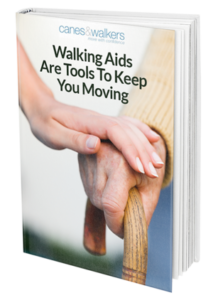For many of us, we take being able to walk for granted. We don’t really understand how challenging it can be to get around without something to help.
This lack of independence can be taxing on the individual, but others as well. Fortunately, there are mobility aids that remedy these challenges and more.
What Are Walking Aids
So, what exactly is a walking aid? Well, we have five types of aids that people can use:
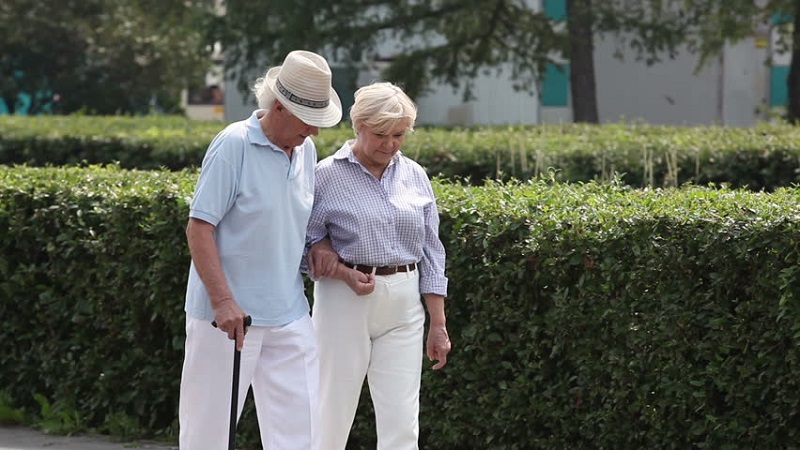
- Crutches: A crutch enables you to transfer weight from your legs to your upper body. They keep you upright and can be used for those with both long term or temporary maladies.
- Canes: A cane works a lot like a crutch, but it only takes a small amount of weight off your legs and puts more pressure on your hands and wrists.
- Wheel Chairs: A wheel chair is used for those who cannot put any weight on their legs or they have no use of their legs at all. These are preferred for those who are going great distances or for those with severe disabilities/injuries.
- Walkers: A walker features four metal legs that is going to support you while you walk. There are three types of walkers beyond the classic three-sided walker.
- Rollators: These will have four wheels, handlebars and a seat
- Knee Walkers: These are much like a rollator, except instead of sitting, you rest your knee.
- Walker-Cane Hybrid: This is a cross between a walker and a cane—it has two legs instead of a complete frame and can be used single handedly, or with both hands.
- Mobility Scooter: A mobility scooter are much like a wheel chair, except it uses a battery to move. This is often preferred by people who don’t have the upper body strength to push the wheel chair themselves.
5 Injuries And Conditions That Walking Aids Can Prevent
Walking aids aren’t just for seniors in nursing homes—these tools can be used to help treat and prevent a variety of maladies one may face. Let’s take a look at the top 5 injuries and conditions a walking aid and prevent or help.
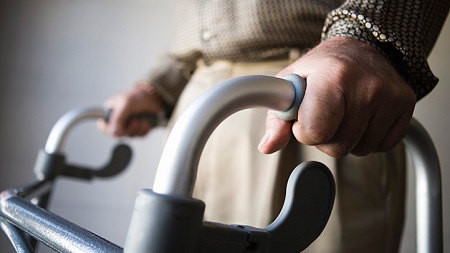
Poor Balance
When you get older, there’s a chance that your balance isn’t going to be the best. A walking aid will prevent you from falling because you’ll be properly supported. Should an elderly person with poor balance fall, they could experience:
- Broken / Fractured Hip
- Broken / Fractured Knees
- Bullet Point 1
- Bullet Point 2
Blood Clots
When we fall, especially if we are older, we have a fear of falling. Many times when the elderly falls and it results in some kind of injury.
This will cause the elderly person to have a fear of falling, which will lead them to not moving around very much. This is a serious problem of the person has circulatory problems and are prone to blood clots in the legs.
Simple Fractures
Not only does being able to move around prevent blood clots in the legs, moving around even a little bit can reduce the instance of fractures. As you move around, your muscles are going to be stronger and you’ll be less likely to lose your footing while walking.
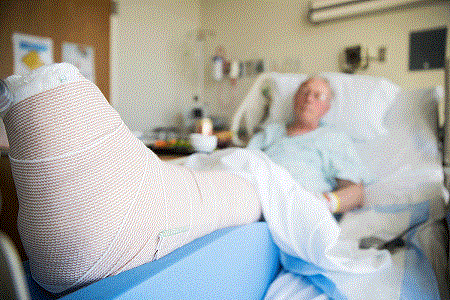
Abrasions
Falling can result in bruising and broken or fractured bones, but you can also get cuts too. You might not think that a walking aid is going to make that much of a difference in terms of cuts and abrasions, but it can!
By having something to help you evenly distribute your weight while walking, you’re not going to have situations where your feet slip out from under you, causing you to scrape a knee or arm on the pavement. If the abrasion is left untreated, it could turn into an infection.
Arthritis
Now, we know that using a walking device is going to prevent arthritis, but using them can make your arthritis a little more bearable. Anyone who struggles with getting around because it’s damp or cold outside understands who draining and painful it can be.

However, when you use a walking aid, especially when your arthritis is acting up, you’ll be able to get around a little more easily because your entire body weight isn’t on your knees and ankles.
Who Else Can Benefit From Using Walking Aids
The elderly or people who have injuries aren’t the only folks who could benefit from using a walking aid. People who were born with cerebral palsy, spina bifida, multiple sclerosis, and even developmental disabilities can greatly benefit from using some form of walking aid.
It is important to note that it is still possible to fall while using one of these devices, so it is very important that you understand how to use the device safely. It’s true that these walking aids can reduce and prevent injuries, they can also cause the same injuries if you aren’t careful!
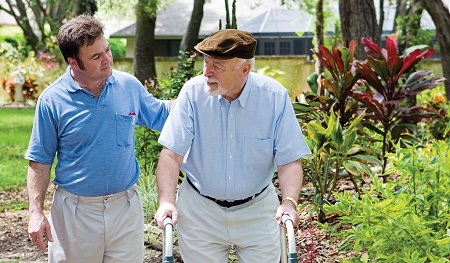
Admitting that you cannot get around like you used to isn’t easy for anyone. When someone is used to getting up and walking to and from places, and suddenly not being able to for one reason or another, it can be on the depressing side. However, with a walking aid, you will be able to get around so much easier and more confidently.
It doesn’t matter if you have balance problems, arthritis, or a broken limb, a walking aid will allow you to get from Point A to Point B. Let’s not forget that if you’re using a walking cane, you get bonus points for style!


